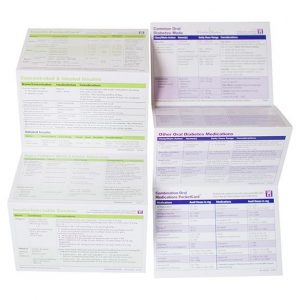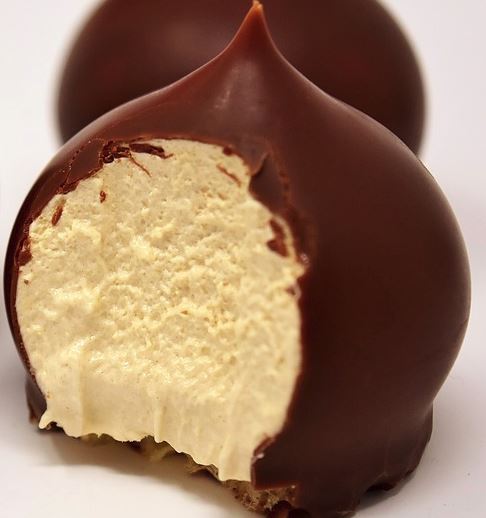Could work-related stress increase Type 2 risk in women?
A recent study featured in the European Journal of Endocrinology finds that work stress may contribute to the risk of Type 2 Diabetes, particularly in women.
Recent data shows that 9 percent of the United States population is now living with diabetes and another 84 million people are living with pre-diabetes.
“Risk factors for type 2 diabetes include a lack of physical activity, elevated BMI, being aged 45 years or older, having high cholesterol and high blood pressure, or having a family history of diabetes, heart disease, or stroke.”

There are also psychological risk factors to consider such as depression, which can increase the risk of developing type 2 diabetes. This new study finds that for women, work-related stress may impact their risk of developing diabetes over time.
70,000 women were studied over a 22 year period. During the study, researchers were studying the link between mentally tiring work and the increased risk of developing type 2 diabetes.
75% of the women studied were teachers and expressed that their work was mentally tiring.
Over the 22 year period, 4,187 participants developed type 2 diabetes. However, research revealed that diabetes was considerably higher among participants that deemed their work mentally taxing.
“Specifically, those who said that their job was “very” mentally taxing at the start of the study were 21 percent more likely to develop the condition than women with “little or not mentally tiring work.”
Researchers did consider outside factors, but still found the the rates were the same. The study concluded the importance of stress management in the workplace and how it can affect long term health.
Researchers hope to examine the effects of work-related stress on those already living with type 2 diabetes.
To learn more: Type 2 diabetes: Work stress may increase risk in women – Medical News Today
Sign up for Diabetes Blog Bytes – we post one daily Blog Byte from Monday to Friday. And of course, Tuesday is our Question of the Week. It’s Informative and FREE! Sign up below!
[yikes-mailchimp form=”1″]Free Resource Friday | Updated Digital PocketCards

FREE Updated PocketCards | Download yours today!
Our digital Injectable Meds PocketCard has been updated in the CDCES Coach App and Online to reflect the new FDA approval of liraglutide (Victoza) for pediatrics (age 10-17) with type 2 diabetes.
Want to learn more about diabetes medications, insulin management and technologies?
Join our Diabetes Ed Course in San Diego, Sept 4-6, 2019. Earn over 30 CEs while having fun!
Sign up for Diabetes Blog Bytes – we post one daily Blog Byte from Monday to Friday. And of course, Tuesday is our Question of the Week. It’s Informative and FREE! Sign up below!
[yikes-mailchimp form=”1″]
Medical Myths – Top 10 List

Over 400 common medical practices were contradicted by rigorous research. For this blog, I highlight six widely held theories that are refuted by thousands of studies.
For all 10 myths below and more, we invite you to check out this scientific review led by Dr. Vinjay Prasad of Oregon Health and Science University who said, “Very smart and well-intentioned people came to practice these things for many, many years. But they were wrong.”
Myth – Fish oil reduces risk of heart disease
Truth – In a trial involving 12,500 people at risk for heart trouble, daily omega-3 supplements did not protect against heart disease.
Myth – Step counters and calorie trackers help people lose weight.
Truth – Based on a study of 470 “dieters” who were using digital assistance and tracked for two years, those who wore tracking devices actually lost less weight than those who followed standard advice.
Myth – A single dose of oral opioids to treat emergency room patients works better than medications like aspirin and ibuprofen.
Truth – Clinical trial showed that medications like aspirin and ibuprofen are much safer alternatives which relieve pain just as well among emergency room patients.
Myth – Ginkgo biloba protects against memory loss and dementia
Truth – Made from the leaves of ginkgo trees, this supplement was widely used is promoted as a way to preserve memory. A large federal study, published in 2008, definitively showed the supplement is useless for this purpose.
Myth- Peanut allergy risk is higher if a child is exposed to peanuts before age three.
Truth – Children exposed to peanuts before age 1 have no greater risk of peanut allergies.
Myth – Lifelike doll carried around by teenager will prevent unplanned pregnancy
Truth – It turns out that these “infant simulators” were actually associated with a slightly increased risk of pregnancy.
For a complete list as published in the New York Times article, 10 Medical Myths We Should Stop Believing. Doctors, Too.
Sign up for Diabetes Blog Bytes – we post one daily Blog Byte from Monday to Friday. And of course, Tuesday is our Question of the Week. It’s Informative and FREE! Sign up below!
[yikes-mailchimp form=”1″]
1 in 3 Young Adults Suffers From Loneliness in the U.S.
A new study suggests that suffering from loneliness is common for young adults between the ages of 18-24. Even young and active adults can feel isolated.
Data from 1200 participants revealed that at least 20% felt “left out,” lonely or isolated at times and provided low ratings for mental and physical health.
Loneliness was more commonly reported in adults younger than 25 with 30%, where only 11% of adults 65 and older reported similar feelings.
The “Loneliness Epidemic” has been highlighted by many studies and supported by numerous researchers. “Last year, a study of more than 20,000 U.S. adults found that nearly half felt lonely at least sometimes. And only 53 percent said they had meaningful face-to-face interactions everyday.”
Researchers believe this is no longer just a social issue and should be considered a public health issue. Chronic loneliness is linked to an increased risk of hyptertension, cardiovascular disease, dementia, and other mental health issues.
“It’s possible the relationship goes in “both directions” — with loneliness and health issues feeding each other.”
The lead researcher on the study, Dr. Rebecca Mullen, talks about the difference between being lonely and having “alone time.” Alone time in many cases can be healthy and many people are happy to be alone.
“Subjective loneliness is different. It makes people feel bad. And, Maddux said, that can come with a “whole package” of issues, like poor diet, poor sleep and time spent on the couch instead of being physically active.”
Maddux dives into theories as to why a typically socially active group, ages 18 – 24, would be suffering from loneliness. In the age of smartphones, Maddux believes this may be robbing young people of face to face interactions. A number of studies support this theory stating that screen time is directly correlated with depression and loneliness.
“Young people, she added, may have a harder time keeping those social media experiences in perspective — and understanding that when other people post, they are probably trying to present their lives in the shiniest terms possible.”
It is important to address your own feelings of loneliness, but also recognize the signs in others. It is easy for someone to isolate themselves. Maddux hopes to destigmatize the issue in order to shed some light on the importance of mental health and community.
To learn more: 1 in 3 Young Adults Suffers From Loneliness in the U.S. – HealthyDay
Sign up for Diabetes Blog Bytes – we post one daily Blog Byte from Monday to Friday. And of course, Tuesday is our Question of the Week. It’s Informative and FREE! Sign up below!
[yikes-mailchimp form=”1″]Study Urges Seniors to Get Moving to Live Longer
A new study suggests that the most important benchmark for life longevity may be staying active and keeping fit.
The study tested 6500 people over the age of 70 by measuring their exercise limits on a treadmill or biking machine. Participants were tracked for 10 years, with 39% passing away by the end of the study.
Researchers found the participants who were active and fit, were twice as likely to be alive a decade later.

Participants with no risk factors had about the same chance of dying as those with three or more risk factors, according to the study, though researchers only found an association between fitness and life span.
“We found fitness is an extremely strong risk predictor of survival in the older age group — that is, regardless of whether you are otherwise healthy or have cardiovascular risk factors, being more fit means you’re more likely to live longer than someone who is less fit,” said lead author Dr. Seamus Whelton.
Researchers stress the importance of staying fit. Fitness can be measured using a treadmill or a biking machine. However, educators can also assess fitness by a self-report of a person’s physical activities as well.
The researchers believe that participants who are sedentary would benefit from beginning a routine of short exercises, but encourage movement newbies to check with their provider first.
To learn more: Study Urges Seniors to Get Moving to Live Longer – HealthyDay.
See our Exercise Resource Page for a bunch of wonderful handouts and movement ideas.
Sign up for Diabetes Blog Bytes – we post one daily Blog Byte from Monday to Friday. And of course, Tuesday is our Question of the Week. It’s Informative and FREE! Sign up below!
[yikes-mailchimp form=”1″]Special Questions of the Week | June 25, 2019

Today we are excited to offer two questions – one on marshmallows for fun and one based on the updated CDCES Exam outline.
If you plan to take the CDCES Exam after July 1, 2019, we invite you at join our discounted and updated Diabetes Education Boot Camp (starts July 1st) which incorporates changes to the CDCES content outline, including a more intensive focus on technology, social issues, and emergency readiness.
Special Questions of the Week – June 25
This week we decided to add a fun question to our usual technical question! Speaking of fun, help improve your study efficiency and enjoyment by getting out in the sunshine and taking a break – your brain needs mini-rests to keep assimilating all this CDCES® prep material!
After you finish smelling the flowers, join our Summer Diabetes Ed Boot Camp, starting July 1. It reflects the changes to the updated content outline for even more CDCES® exam readiness – plus earn 12.75 CEs.
You can also download our free CDCES Coach App!
Sign up for Diabetes Blog Bytes – we post one daily Blog Byte from Monday to Friday. And of course, Tuesday is our Question of the Week. It’s Informative and FREE! Sign up below!
[yikes-mailchimp form=”1″]Women Leaders Conference Keynote Explains Ancient Memory Strategy
Tracey Brown Makes a Lasting Impression at Women Leaders in Diabetes Conference – Join us in Florida on Dec 6th to get inspired by Ms. Brown in person.

Tracey Brown, keynote speaker and CEO of the American Diabetes Association, inspired, informed and wowed us with her presentation. She coached attendees to use storytelling infused with authenticity to help create and build memorable connections. These connections can be the spark for creating meaningful relationships and moving change forward. When we use storytelling that is authentic, even when our message is persuasive, our chance of success increases.
“People will forget what you said, but they will never forget how you made them feel.” – Maya Angelou
As diabetes educators, a central tenant of our profession is teaching colleagues and people living with diabetes about self-management strategies and health improvement. We meet with providers and community leaders to encourage them to refer participants to our education programs. We share healthy lifestyle strategies with family and friends.
During these various teaching opportunities, do we try to get our message across by reciting a myriad of facts and figures to try and convince others to change, refer to our program, or get active? I know that I have used this strategy, with limited success. Might we have better outcomes by using an ancient strategy, that not only appeals to the brain but also the emotions?
“Stories are 22 times more memorable than facts and figures alone.” – Tracey Brown, ADA
The first step is learning how to tell a good story. A story that resonates with the listener.
Strategies to tell a good story:
- Have a goal. Be clear on why you want/need to tell this story.
- Grab attention. Why would the audience listen? Stand up for your viewpoint to stand out.
- Keep engaging. Ask yourself, why will the audience care?
- Enable action. Why would they share your story?
During your storytelling, keep your “why” authentic and frame your “ask” as something bigger than what you can offer. Make sure to tune into and acknowledge your audiences’ beliefs and disbelief.
Focus on meeting people where they are. We don’t have to use fancy language and tons of facts and figures to make an impression. We need to keep it real while engaging the listener.

Thank you Ms. Brown for sharing your story and inspiring us to use storytelling to help inspire providers, colleagues, people living with diabetes and leaders that influence access and funding for diabetes care.
Women Leaders Coming to Florida

If you couldn’t make the Women Leaders in Diabetes Conference this May (which was completely magical), we have great news. We will be holding a Women Leaders in Diabetes Conference on December 6, 2019 in Tampa, Florida.

Join us at the Safety Harbor Resort & Spa!
Enjoy a day of networking with other amazing women and end your weekend in Safety Harbor’s spa. Enjoy complimentary steam rooms, sauna, whirlpools, and tennis courts. Fun for the whole family!
Our Diabetes Detective Team scans the diabetes news to discover the most relevant info that Diabetes Educators need in their daily practice. We post one daily Blog Byte from Monday to Friday. And of course, Tuesday is our Question of the Week. It’s Informative and FREE! Sign up below!
[yikes-mailchimp form=”1″]
High-fat diet linked to negative changes in gut microbiome
A study published in Gut, an international journal in gastroenterology and hepatology, revealed that a diet low in carbohydrates and high in fat can lead to a detrimental shift in a person’s gut microbiome. Duo Li, PhD of the Institute of Nutrition and Health at Qingdao University in China, believes this study is particularly important to countries becoming more westernized.
“Evidence has shown that humans gut microbiota diversity and richness are reduced with consumption of high-fat diets compared with more traditional diets with a higher proportions of carbohydrates. Such diet-induced ‘dysbiosis’ in gut-associated microbial communities has been postulated as a major trigger of metabolic impairments associated with obesity.”
During the study, 217 healthy young adults were assigned to one of three isocaloric diets, low-fat, moderate-fat, and high-fat. Then changes in the participant’s gut bacteria and inflammatory triggers were observed.
The aim of the study was to examine whether a low-fat diet or
“Li and colleagues found that the higher-fat diet was associated with changes to long-chain fatty acid metabolism, which resulted in higher levels of chemicals that could potentially trigger inflammation.”
Kelly Issokson, MS, RD, CNSC believes that the study is quite limited but shed light on an interesting observation for a younger population and fat intake.
“I will continue to recommend the Mediterranean-style eating pattern, which has been associated with favorable changes in the microbiota and metabolome as well as positive effects on health and wellness. A Mediterranean diet is rich in fiber, fruits, vegetables, nuts, seeds, whole grains, legumes, olive oil (high in omega 3 fatty acids), and encourages moderate to low intake of fish, dairy, and meat,” Issokson said.
To learn more: High-fat diet linked to unfavorable gut microbiota changes – Healio
Sign up for Diabetes Blog Bytes – we post one daily Blog Byte from Monday to Friday. And of course, Tuesday is our Question of the Week. It’s Informative and FREE! Sign up below!
[yikes-mailchimp form=”1″]







